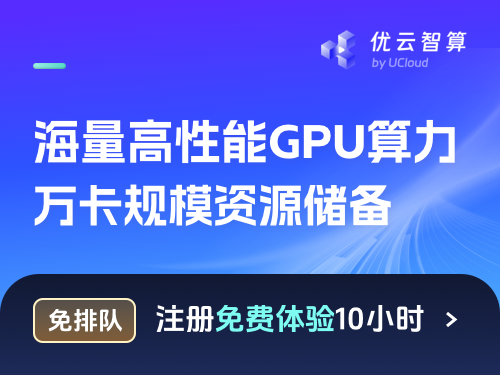Fuse 模块配方¶
创建日期:2020年10月26日 | 最后更新:2021年7月26日 | 最后验证:2024年11月5日
本教程演示了如何将一系列PyTorch模块融合成一个单一模块,以及如何进行性能测试以比较融合模型与其非融合版本。
介绍¶
在将量化应用于模型以减少其大小和内存占用之前(有关量化的详细信息,请参见量化配方),模型中的模块列表可能会首先融合为一个单一模块。融合是可选的,但它可以节省内存访问,使模型运行更快,并提高其准确性。
先决条件¶
PyTorch 1.6.0 或 1.7.0
步骤¶
按照以下步骤融合示例模型,量化它,编写脚本,为移动设备优化它,保存它并使用Android基准测试工具进行测试。
1. 定义示例模型¶
使用在PyTorch Mobile Performance Recipes中定义的相同示例模型:
import torch
from torch.utils.mobile_optimizer import optimize_for_mobile
class AnnotatedConvBnReLUModel(torch.nn.Module):
def __init__(self):
super(AnnotatedConvBnReLUModel, self).__init__()
self.conv = torch.nn.Conv2d(3, 5, 3, bias=False).to(dtype=torch.float)
self.bn = torch.nn.BatchNorm2d(5).to(dtype=torch.float)
self.relu = torch.nn.ReLU(inplace=True)
self.quant = torch.quantization.QuantStub()
self.dequant = torch.quantization.DeQuantStub()
def forward(self, x):
x = x.contiguous(memory_format=torch.channels_last)
x = self.quant(x)
x = self.conv(x)
x = self.bn(x)
x = self.relu(x)
x = self.dequant(x)
return x
2. 生成带有和不带有 fuse_modules 的两个模型¶
在上述模型定义下方添加以下代码并运行脚本:
model = AnnotatedConvBnReLUModel()
print(model)
def prepare_save(model, fused):
model.qconfig = torch.quantization.get_default_qconfig('qnnpack')
torch.quantization.prepare(model, inplace=True)
torch.quantization.convert(model, inplace=True)
torchscript_model = torch.jit.script(model)
torchscript_model_optimized = optimize_for_mobile(torchscript_model)
torch.jit.save(torchscript_model_optimized, "model.pt" if not fused else "model_fused.pt")
prepare_save(model, False)
model = AnnotatedConvBnReLUModel()
model_fused = torch.quantization.fuse_modules(model, [['bn', 'relu']], inplace=False)
print(model_fused)
prepare_save(model_fused, True)
原始模型及其融合版本的图形将如下打印:
AnnotatedConvBnReLUModel(
(conv): Conv2d(3, 5, kernel_size=(3, 3), stride=(1, 1), bias=False)
(bn): BatchNorm2d(5, eps=1e-05, momentum=0.1, affine=True, track_running_stats=True)
(relu): ReLU(inplace=True)
(quant): QuantStub()
(dequant): DeQuantStub()
)
AnnotatedConvBnReLUModel(
(conv): Conv2d(3, 5, kernel_size=(3, 3), stride=(1, 1), bias=False)
(bn): BNReLU2d(
(0): BatchNorm2d(5, eps=1e-05, momentum=0.1, affine=True, track_running_stats=True)
(1): ReLU(inplace=True)
)
(relu): Identity()
(quant): QuantStub()
(dequant): DeQuantStub()
)
在第二个融合模型输出中,列表中的第一项bn被替换为融合模块,其余模块(在本例中为relu)被替换为恒等模块。此外,生成了模型的非融合和融合版本model.pt和model_fused.pt。
3. 构建Android基准测试工具¶
获取PyTorch源代码并按照以下步骤构建Android基准测试工具:
git clone --recursive https://github.com/pytorch/pytorch
cd pytorch
git submodule update --init --recursive
BUILD_PYTORCH_MOBILE=1 ANDROID_ABI=arm64-v8a ./scripts/build_android.sh -DBUILD_BINARY=ON
这将生成Android基准测试二进制文件speed_benchmark_torch,位于build_android/bin文件夹中。
4. 测试比较融合和非融合模型¶
连接您的Android设备,然后复制speed_benchmark_torch和模型文件并在其上运行基准测试工具:
adb push build_android/bin/speed_benchmark_torch /data/local/tmp
adb push model.pt /data/local/tmp
adb push model_fused.pt /data/local/tmp
adb shell "/data/local/tmp/speed_benchmark_torch --model=/data/local/tmp/model.pt" --input_dims="1,3,224,224" --input_type="float"
adb shell "/data/local/tmp/speed_benchmark_torch --model=/data/local/tmp/model_fused.pt" --input_dims="1,3,224,224" --input_type="float"
最后两个命令的结果应该如下:
Main run finished. Microseconds per iter: 6189.07. Iters per second: 161.575
和
Main run finished. Microseconds per iter: 6216.65. Iters per second: 160.858
对于这个示例模型,融合模型和非融合模型之间的性能差异不大。但可以使用类似的步骤来融合和准备一个真实的深度模型,并测试以查看性能改进。请记住,目前torch.quantization.fuse_modules仅融合以下模块序列:
卷积, 批归一化
卷积, 批归一化, 激活函数
卷积, 激活函数
线性, relu
bn, relu
如果向fuse_modules调用提供了任何其他序列列表,它将被简单地忽略。




